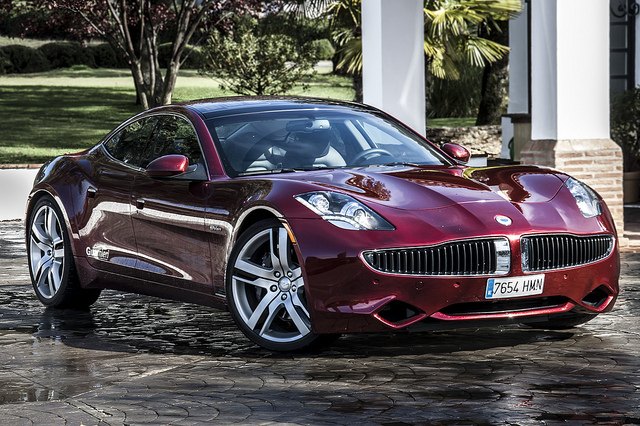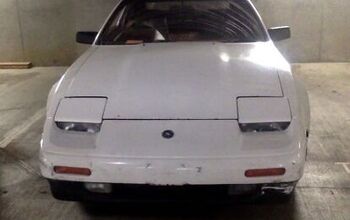Green Auto Loan and Grant Programs on Trump's Budget Chopping Block

Automakers would have to fund a larger share of future green technology projects if the Trump White House’s budget blueprint passes as written.
The administration proposes to do away with a little-used — and sometimes controversial — U.S. Energy Department loan program, as well as a grant program dedicated to spurring advanced fuel-saving technologies.
Contained in the budget blueprint is the elimination of the federal government’s Advanced Research Projects Agency-Energy program, known as ARPA-e. That initiative, created in 2007, doles out $300 million each year for environmentally friendly research initiatives.
While automakers tapped into the program, a number of Silicon Valley startups used the fund as seed money for marketable technologies. Green energy companies also received money from the program.
In light of Trump’s intent to reduce funding to the Environmental Protection Agency, as well the government’s plan to re-open the EPA’s midterm review of 2025 fuel efficiency targets, it’s not surprising the proposal has met fierce criticism. In response, the Trump administration claimed that the “private sector is better positioned to finance disruptive energy research and development and to commercialize innovative technologies.”
ARPA-e isn’t the only federal initiative poised to bite the dust, but it’s arguably the most controversial of the proposed eliminations. Also on the chopping block is the Advanced Technology Vehicle Manufacturing loan program, created in 2008. That program, unused since 2011, became a political lightning rod after low-cost loans were awarded to ill-fated Fisker Automotive and another failed startup. Taxpayers, still recovering from the recession, took a bath.
Three existing automakers received billions of dollars from the program. Ford walked away with a $5.9 billion loan in 2009, while Nissan saw $1.45 billion the following year. Also in 2010, upstart Tesla Motors claimed $465 million from the program’s $25 billion pool.
While it hasn’t been used in years, the program’s existence provides hope and opportunity to companies, argues the National Resources Defense Council. The environmental advocacy non-profit has stated the program “plays a critical role in bringing promising technologies out of the lab and into the real world, bridging a funding gap that entrepreneurs call ‘the valley of death.'”
[Source: Reuters] [Image: David Villarreal/ Flickr ( CC BY-SA 2.0)]

More by Steph Willems
Latest Car Reviews
Read moreLatest Product Reviews
Read moreRecent Comments
- SCE to AUX All that lift makes for an easy rollover of your $70k truck.
- SCE to AUX My son cross-shopped the RAV4 and Model Y, then bought the Y. To their surprise, they hated the RAV4.
- SCE to AUX I'm already driving the cheap EV (19 Ioniq EV).$30k MSRP in late 2018, $23k after subsidy at lease (no tax hassle)$549/year insurance$40 in electricity to drive 1000 miles/month66k miles, no range lossAffordable 16" tiresVirtually no maintenance expensesHyundai (for example) has dramatically cut prices on their EVs, so you can get a 361-mile Ioniq 6 in the high 30s right now.But ask me if I'd go to the Subaru brand if one was affordable, and the answer is no.
- David Murilee Martin, These Toyota Vans were absolute garbage. As the labor even basic service cost 400% as much as servicing a VW Vanagon or American minivan. A skilled Toyota tech would take about 2.5 hours just to change the air cleaner. Also they also broke often, as they overheated and warped the engine and boiled the automatic transmission...
- Marcr My wife and I mostly work from home (or use public transit), the kid is grown, and we no longer do road trips of more than 150 miles or so. Our one car mostly gets used for local errands and the occasional airport pickup. The first non-Tesla, non-Mini, non-Fiat, non-Kia/Hyundai, non-GM (I do have my biases) small fun-to-drive hatchback EV with 200+ mile range, instrument display behind the wheel where it belongs and actual knobs for oft-used functions for under $35K will get our money. What we really want is a proper 21st century equivalent of the original Honda Civic. The Volvo EX30 is close and may end up being the compromise choice.


































Comments
Join the conversation
The purpose of the ATVM program was ultimately environmental. Meanwhile, fracking is making America's air cleaner because utilities are switching from coal to natural gas
Agreed. Coal will go away in the US, not because of regulation killing the industry, but because economics. if our elected officials were smart we'd be preparing that workforce for that eventuality rather than pandering to them though.